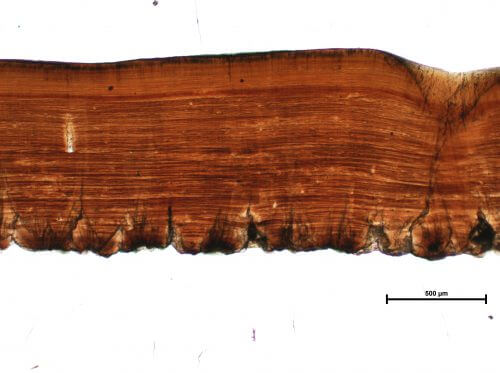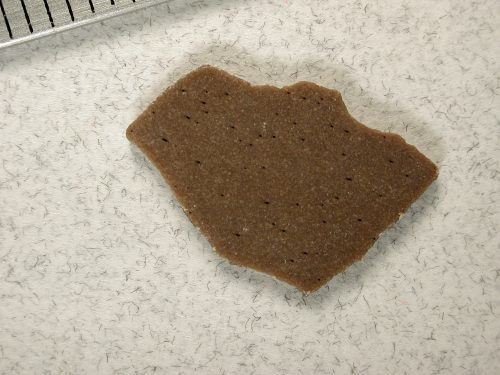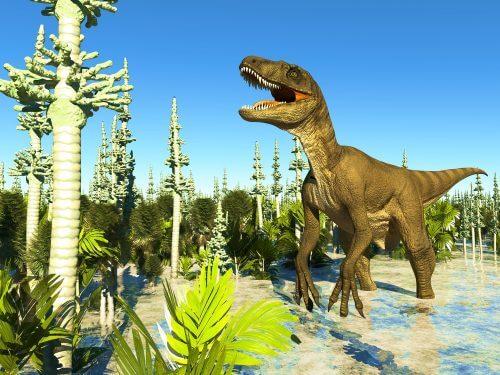In an interview with the Hidan website, Prof. Hagit Afek explains that she chose to examine dinosaur eggs from Canada, because the slab on which it rests was also during the time it was examined in a cold climate region, and therefore a high temperature of the eggs will indicate the temperature in the dinosaur's stomach that laid them

The question is whether the dinosaurs were warm-blooded, or whether they were cold-blooded dependent on the heat around them. This question gets even more complicated when, according to what is known about them today, dinosaurs can be roughly divided into two groups: dinosaurs with a lizard-like pelvis and dinosaurs with a bird-like pelvis. From an evolutionary point of view, the dinosaurs are placed between the ancient reptiles and the birds. Accordingly, it could be assumed that the dinosaur groups possessed biological characteristics of those familiar groups.
Lizards belong to the group of cold-blooded animals whose body temperature is directly related to the ambient temperature, while birds are warm-blooded and have metabolic control over their body heat. Since the discovery of dinosaurs, the question has been asked, what was the body temperature of dinosaurs and at what stage did the ability to metabolically control body heat develop? In an interview with the Hidaan website, Prof. Hagit Afek, currently at the Institute of Earth Sciences at the Hebrew University, explains that the tendency to be warm-blooded probably developed in the dinosaurs at an early stage in the evolution from reptiles to dinosaurs.
Prof. used a unique method for measuring historical temperatures, which she developed together with other partners. The method, called the conjugated isotope method, in which it examines the calcium carbonate (calcium carbonate) in fossils and measures the temperature at which it is formed through a chemical bond between two heavy rare isotopes. In the current study, published in the prestigious journal Science Advances, Prof. Afek applied this method, together with partners from Yale University, to well-preserved dinosaur eggs, from three different species of dinosaurs, in order to check the temperature at which the eggs were formed about 70 million years ago , aka the body temperature of the mother dinosaur that laid them.

The body temperature measured in the dinosaur eggs was significantly higher than the temperature of the environment in which they lived, which indicates a metabolic ability to control body temperature - dinosaurs knew how to warm themselves, unlike reptiles.
Prof. Afek: "Through the analysis of dinosaur eggs from three different species - two of them from a species evolutionarily close to birds and the third from a species evolutionarily close to reptiles to see where on the evolutionary continuum the metabolic ability to warm the body developed. We saw that this feature evolved very quickly, close to the divergence from the reptiles. We used the geochemical method 'conjugated isotopes', to measure the temperature at which the eggs were formed. At the same time, we measured the ambient temperature in the area by analyzing conjugated isotopes in oysters from the same period. In the three species of dinosaurs, both in a species that is evolutionarily close to birds and in a species that is close to reptiles, the body temperature found was higher than the ambient temperature, between 35 and 40 degrees Celsius. This indicates an early development of the metabolic ability to control body temperature."
In response to the science site's question, why this was not discovered in the countless studies done on the dinosaurs, Prof. Afek answered: "There were works in the past on what the body temperature of dinosaurs was. They focused on a limited range of species, so they do not answer the evolutionary question. Another problem is that during the period when dinosaurs lived, the climate was hot, so if you check the body temperature of dinosaurs that lived in the tropics and get high temperature measurements, it is impossible to differentiate between warm-blooded dinosaurs and cold-blooded dinosaurs that lived in a warm area. Because of this figure, we decided to test dinosaurs from Canada, which was subjected to a cold climate even during the time of the dinosaurs, roughly where it resides today, so we can estimate that a high body temperature indicates warm blood and not a warm environment.
Regarding the contribution of the research, Prof. Afek added: "This type of research has the function of satisfying our curiosity, because dinosaurs ignite the imagination. If this research makes a child interested in dinosaurs also interested in geochemistry, I have fulfilled my role."
Dr. Robin Dawson, Dr. Daniel Field and Dr. Finchley Hall from Yale University, Prof. Darla Zelinsky from the University of Calgary and Dr. Francois Therrien from the Royal Tyrrell Museum of Paleontology were partners in the study.

More of the topic in Hayadan:

4 תגובות
Under the picture "Dinosaur eats plants."?
"They focused on a narrow range of species... a reprimanding problem is..."
Maybe I'm a bit limited, and rather scolded, but steering please...
I highly doubt that the dinosaur in the picture is a plant eater as written under the picture
So this is also the ultimate proof that the dinosaurs were Moroccan...